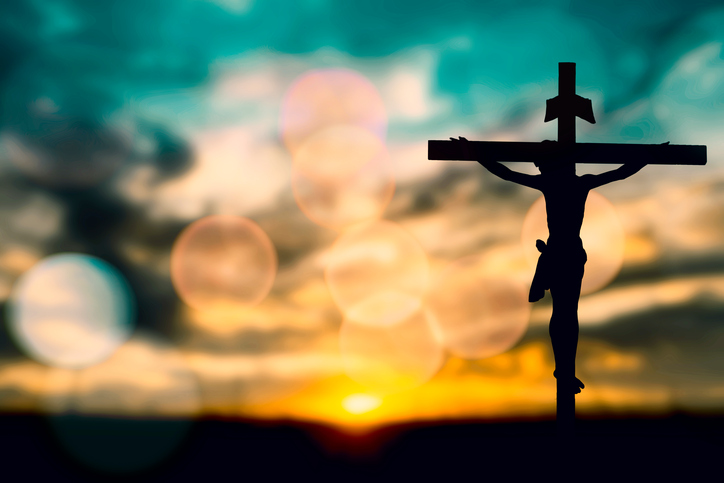Easter is a Christian festival which celebrates the resurrection of Jesus Christ. According to the New Testament of the Bible, Easter occurs three days after the crucifixion of Jesus by Romans.
The date of Easter, when the resurrection of Jesus is said to have taken place, varies from year to year.
The reason for this variation is that Easter always falls on the first Sunday after the first full moon following the spring.

Below are some facts about Easter celebrations.
Easter as a rite of spring
Most major holidays have some connection to the changing of seasons. This is especially seen in the case of Christmas. The New Testament gives no information about what time of year Jesus was born. Many scholars believe, however, that the main reason Jesus’ birth came to be celebrated on December 25 is because that was the date of the winter solstice according to the Roman calendar.
Since the days following the winter solstice gradually become longer and less dark, it was ideal symbolism for the birth of “the light of the world” as stated in the New Testament’s Gospel of John.
Similarly this is the case with Easter, which falls in close proximity to another key point in the solar year: “the vernal equinox” (around March 20)as called, when there are equal periods of light and darkness. For those in northern latitudes, the coming of spring is often met with excitement, as it means an end to the cold days of winter.
Spring also means the coming back to life of plants and trees that have been dormant for winter, as well as the birth of new life in the animal world. Given the symbolism of new life and rebirth, it was only natural to celebrate the resurrection of Jesus at this time of the year.
The connection with Jewish Passover
It is important to point out that while the name “Easter” is used in the English-speaking world, many more cultures refer to it by terms best translated as “Passover” (for instance, “Pascha” in Greek) – a reference, indeed, to the Jewish festival of Passover.
In the Hebrew Bible, Passover is a festival that commemorates the liberation of the Israelites from slavery in Egypt, as narrated in the Book of Exodus.
At the time of Jesus, Passover had special significance, as the Jewish people were again under the dominance of foreign powers (namely, the Romans). Jewish pilgrims streamed into Jerusalem every year in the hope that God’s chosen people (as they believed themselves to be) would soon be liberated once more.
On one Passover, Jesus traveled to Jerusalem with his disciples to celebrate the festival. He entered Jerusalem in a triumphal procession and created a disturbance in the Jerusalem Temple. It seems that both of these actions attracted the attention of the Romans, and that as a result Jesus was executed around the year A.D. 30.
Some of Jesus’ followers, however, believed that they saw him alive after his death, experiences that gave birth to the Christian religion. As Jesus died during the Passover festival and his followers believed he was resurrected from the dead three days later, it was logical to commemorate these events in close proximity.
The Easter bunny and Easter eggs
In early America, the Easter festival was far more popular among Catholics than Protestants. For instance, the New England Puritans regarded both Easter and Christmas as too tainted by non-Christian influences to be appropriate to celebrate. Such festivals also tended to be opportunities for heavy drinking and merrymaking.
The fortunes of both holidays changed in the 19th century, when they became occasions to be spent with one’s family. This was done partly out of a desire to make the celebration of these holidays less rowdy.
From the 17th century onward, there was an increasing recognition of childhood as time of life that should be joyous, not simply as preparatory for adulthood.
It is at this point in the holiday’s development that Easter eggs and the Easter bunny became especially important. Decorated eggs had been part of the Easter festival at least since medieval times, given the obvious symbolism of new life. A vast amount of folklore surrounds Easter eggs, and in a number of Eastern European countries, the process of decorating them is extremely elaborate. Several Eastern European legends describe eggs turning red (a favorite color for Easter eggs) in connection with the events surrounding Jesus’ death and resurrection.
Yet it was only in the 17th century that a German tradition of an “Easter hare” bringing eggs to good children came to be known. Hares and rabbits had a long association with spring seasonal rituals because of their amazing powers of fertility.
One thing is evident in the reports of the history behind the Easter celebrations: it is a period of reflections on the death and resurrection of a man named Jesus Christ of Nazareth, as well as a period for new beginnings in our lives.
A very Happy Easter to all our cherished readers.
SOURCE: Brent Landau, The University of Texas at Austin College of Liberal Arts.


